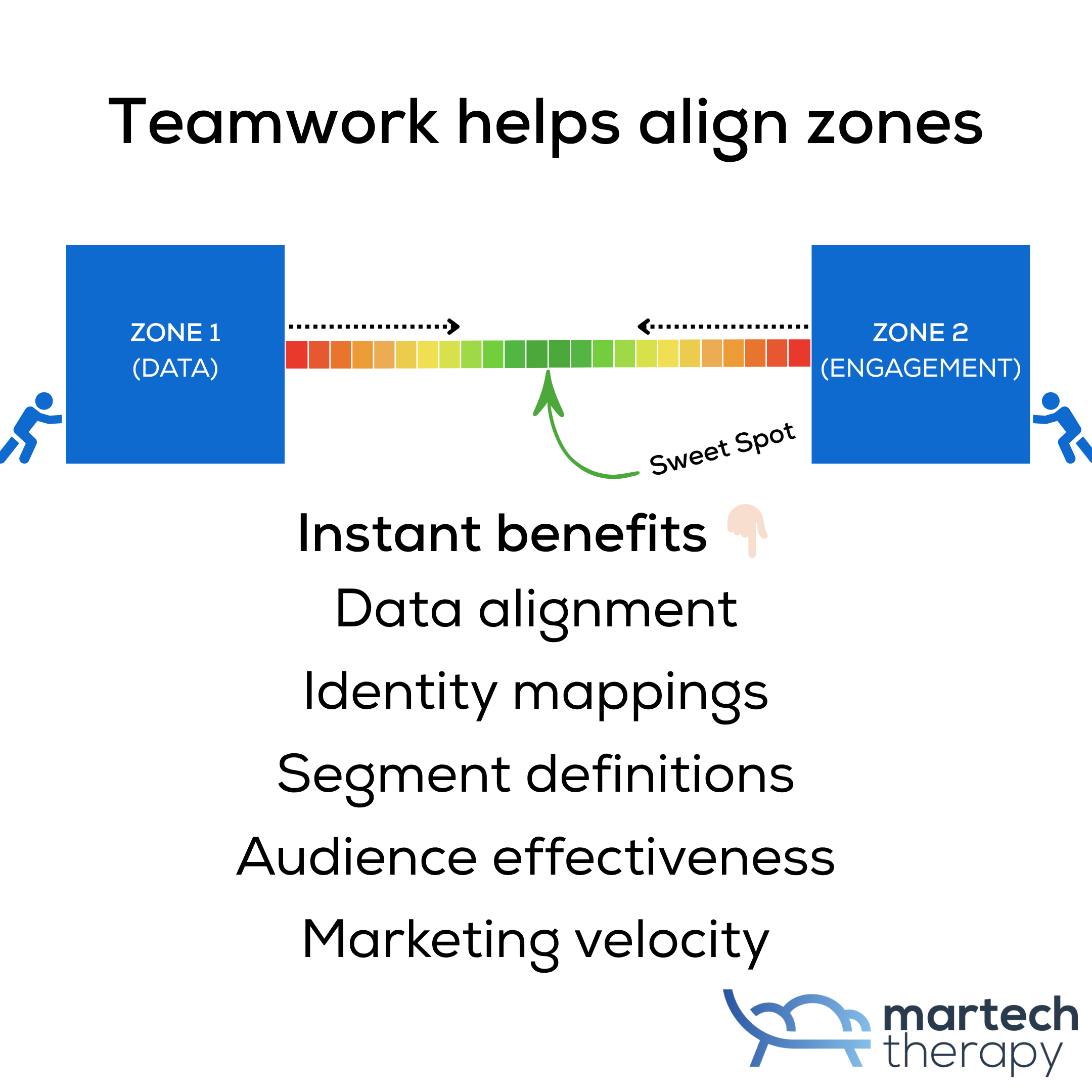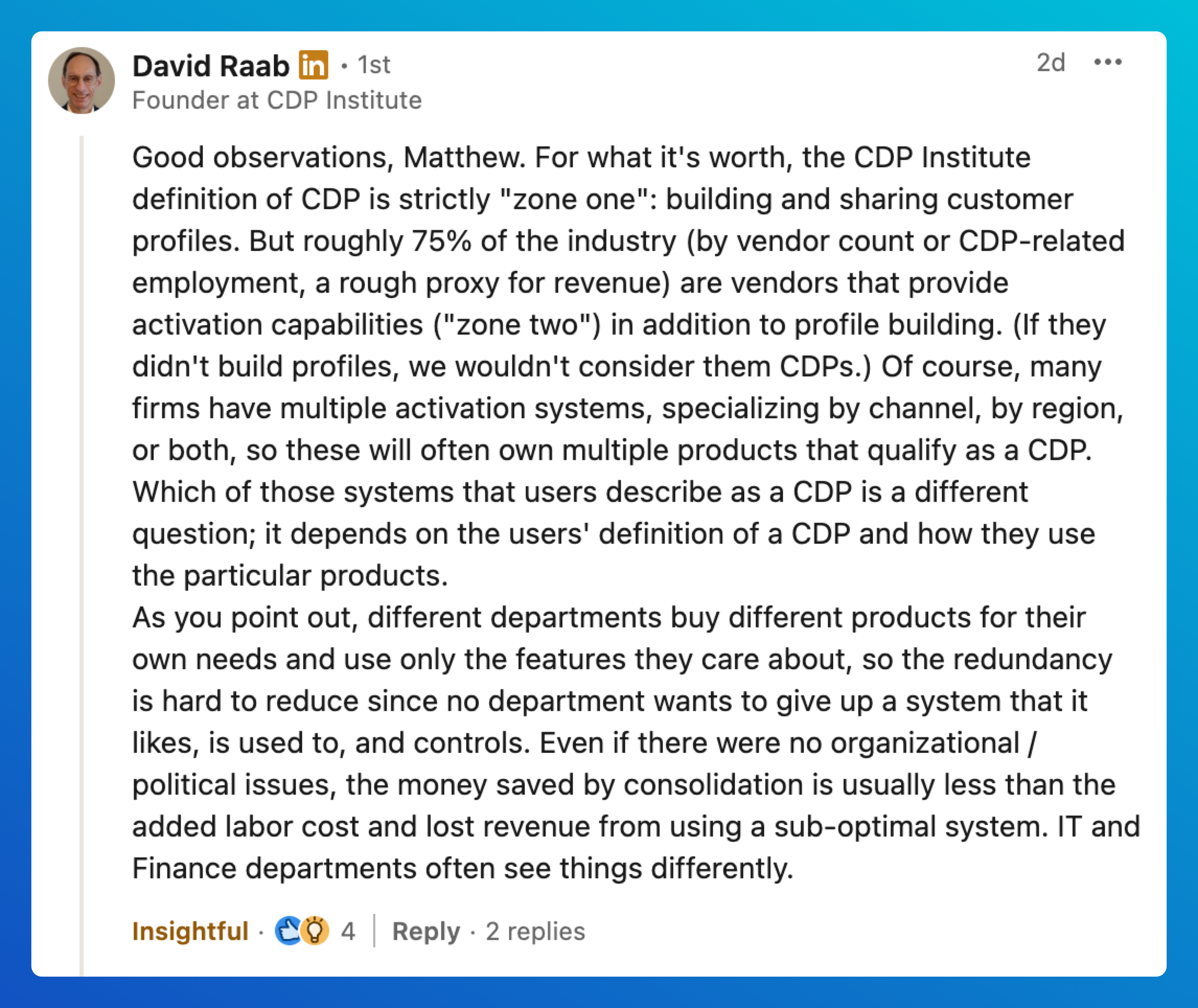You can tell a lot about a company by how it answers one deceptively simple question: Who owns the CDP?
Not the license. Not the roadmap. The actual thing. The model that sits between what marketing wants and what the data team tolerates. The implementation that touches consent flags, event structures, identity graphs, and half a dozen teams trying to ship something yesterday. The reality is that ownership, when it exists, is rarely stable. It shifts and changes shape over time as initiatives develop, teams restructure, or priorities float between the many others on people’s lists.
Across the last few years, I’ve seen it play out the same way more than once. A client asks me to “fix” the CDP. Or to assess whether it’s working. But under the surface, the request is always about ownership. Not just who owns the tool, but who owns the decisions, the blind spots, the mounting workarounds. The whole kit and caboodle.

Because the CDP isn’t broken. The contracts between teams are.
LXA’s State of Martech & Marketing Operations (free and worth a read) report backs this up:
only 22% of respondents say Martech is owned by a single team
The rest? Shared, fractured, or unclear. And where ownership is unclear, so is direction.
So we get two tools solving the same problem in parallel. Campaign teams add an activation layer because the official CDP can’t move fast enough. Data teams throttle usage to protect quality. Product might even be building their own event system on the side. And someone eventually builds a spreadsheet to stitch it all back together.
I am afraid to say it, but this is more often than not the default.
The Mirror in the middle
David Chan’s Dual Zone model helps here. Not because it’s a new concept, but because it gives teams language for something they already feel. Zone One (Data) wants durable models. Zone Two (Engagement) wants flexible execution. The CDP, as a corporate-wide concept, sits between them, and without a clear contract, it gets pulled in both directions.
What gets lost is the connective layer, the orchestration membrane, a shared agreement, if you will. And most companies don’t have one.

In those gaps, things fall apart slowly:
- Segment definitions diverge
- Identity mappings don’t sync
- A/B tests break across tools
- Teams route around each other
- Reporting loses trust because definitions don't match
- Velocity drops as handoffs require escalation or patchwork fixes
Everyone’s just trying to hit their numbers. But no one’s responsible for the handoffs. And over time, those handoffs become bottlenecks.
This is what I’ve started calling ownership dispersal, when no single team owns the middle, and so everyone builds their own logic around it. Like a slow-moving fork in the repo, everyone’s copy starts to look a little different.
And like David Raab recently pointed out to me on LinkedIn, the market now expects activation to be bundled in. Even though the CDP Institute defines the category strictly around profile building, 75% of vendors now include activation capabilities too.

That means companies don’t just accidentally end up with multiple CDPs. They’re sold them that way. Each department buys the piece that works for them. Each ends up with a tool that fits their rhythm, their reporting, and their definition of done.
You don’t unwind that with a migration deck.
"Even if there were no organizational/political issues, the money saved by consolidation is usually less than the added labor cost and lost revenue from using a sub-optimal system." ~ David Raab
In other words: the mess makes sense. Especially in large or federated organizations where tooling maps to budget lines and headcount, not just capability need.
What can actually help?
This isn’t a call for another committee. It’s a nudge to make the handoffs visible. Here’s how I usually help teams surface the real contracts under the stack:
- Draw your zones. Literally, whiteboard what sits in the Data Zone vs. the Engagement Zone. Which tools? Which teams? What flows between them?
- Mark your fragilities. Where are things brittle? Where’s orchestration “someone’s job” but not in their title?
- Find the drift. Which tools overlap? Where do teams disagree on source of truth? Which use cases fall through the cracks?
- Check for duplicate ambition. Do two tools try to segment? Trigger? Model?
It’s not governance theater and this has nothing to do with perceived ranks or seniority internally. It’s a way to name where CDP ownership is fuzzy so the team, the people involved within a company, can choose: do we define this together, or live with it as-is?
When done well, these conversations don’t just improve stack architecture and understanding, they significantly improve team trust. People stop fighting the tool and start seeing the tool as a mirror of how they collaborate.
Where we’re headed
In Part 4, we’ll change it up a little and move from describing the mess to asking what it means. Because CDPs, as we are all aware by now, were supposed to consolidate, simplify, centralize. But that promise never fit the politics, incentives, and working rhythms of most companies.
Maybe it’s time to stop measuring CDPs against ideals they were never designed to reach and instead measure them against the actual cross-team orchestration they enable (or don’t).
More on that soon.
If any of this sounds a little too familiar and you're wondering where to even start, I'm always up for a conversation. Sometimes it just takes an outside view to spot where the real friction is hiding.



Discussion